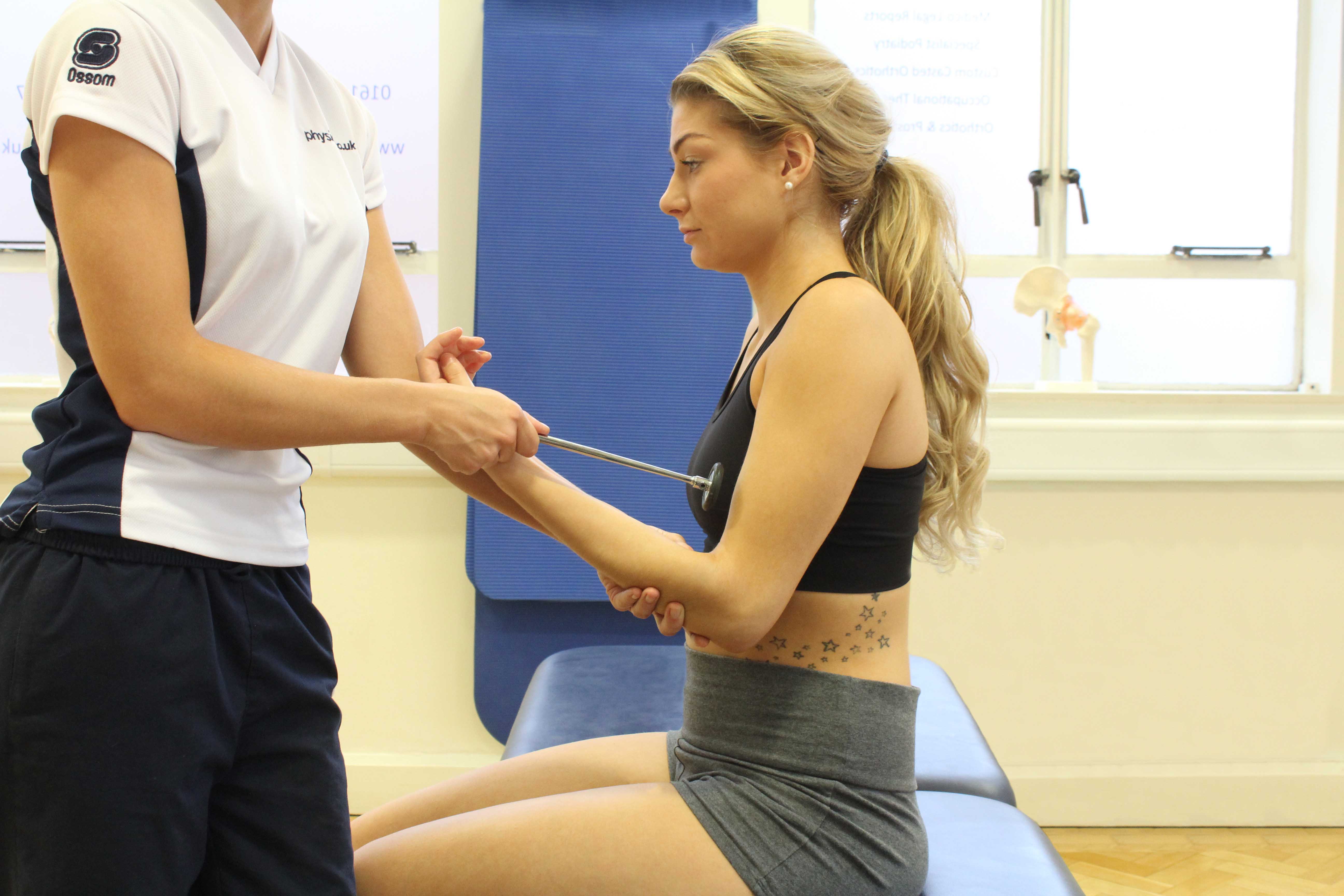What is ulnar nerve compression?
Ulnar nerve compression occurs when the ulnar nerve is compressed as it passes alongside the bony bump on the inside of the elbow. This bony bump is often referred to as the ‘funny bone’. Ulnar nerve compression at the elbow can be successfully treated by a physiotherapy programme.
 Above: Reflex test involving the innervation around the elbow
Above: Reflex test involving the innervation around the elbowHow can ulnar nerve compression occur?
Ulnar nerve compression is usually caused by a direct blow to the nerve as it passes behind the inside of the elbow. This blow may injure the nerve and cause interference in the transmission of signals along it. Alternatively, it may injure structures surrounding the nerve. To heal the damage to these structures, the body commences an inflammatory response. This inflammation around the nerve can also compress it and interfere with the transmission of signals.
What are the symptoms of ulnar nerve compression?
Compression of the ulnar nerve causes interference in the signals passed along the nerve. This can cause changes in sensation in the skin on the inside of the forearm, the palm of the hand on the little finger side, the little finger and half of the ring finger. Pins and needles or numbness can also be present in these areas. The nerve is also often sore to touch where it is compressed or inflamed. This is usually behind the inside of the elbow. Other symptoms include:
What should I do if I have an ulnar nerve compression?
Ulnar nerve compression will generally not get better on its own if the cause of the compression is not treated. If you have a compression of your ulnar nerve, you should consult your physiotherapist. If your forearm or hand are numb, you should be careful not to burn yourself on hot objects.
 Above: Our physiotherpaist teaching her patient a stretch to relieve neural tension.
Above: Our physiotherpaist teaching her patient a stretch to relieve neural tension.Physiotherapy treatment for an ulnar nerve compression.
The assistance of a physiotherapist is very important in the treatment of an ulnar nerve compression injury. Your physiotherapist can diagnose your injury and establish its severity. From their assessment, your physiotherapist will determine an appropriate treatment plan. Occasionally, referral for special nerve conduction tests to assess the transmission of signals along the nerve is required. Treatment commonly involves activity modification, electrotherapy and soft tissue treatment such as massage and stretching. Additional physiotherapy options include:
What shouldn’t I do if I have an ulnar nerve compression?
If you have or suspect that you have ulnar nerve compression, you should not continue to participate in contact sports before being assessed by your physiotherapist.
Could there be any long-term effects from an ulnar nerve compression?
Ulnar nerve compression does not usually produce any long-term effects, providing it is properly diagnosed and appropriately treated. If not ulnar nerve compression can lead to ongoing altered sensation in the forearm and hand, and a prolonged lay-off from exercise and sport. In some situations, this may occur despite appropriate treatment. In these cases, surgery may be required to remove the structures which are compressing the nerve, to alleviate your symptoms.
To arrange a physiotherapy assessment call Physio.co.uk on 0330 088 7800 or book online.

 0330 088 7800
0330 088 7800

































